Week 1
During the first week, we sat down and discussed the project as a whole. After coming up with a basic plan for the game, we created a spreadsheet to evenly distribute the work. In Friday’s meeting, we collaborated to create a list of requirements and questions for our client for the following week’s interview.
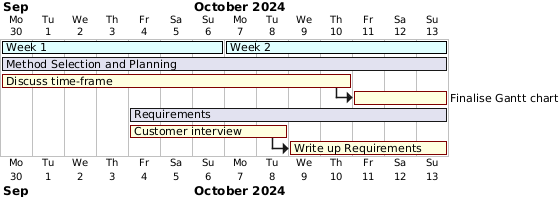
Week 2
In week two, we finalized our interview questions and had our meeting with the client. Following this meeting, we began working on the requirements. In Friday’s meeting, we discussed the overall project timeframe and started drafting an initial Gantt chart (pictured below), outlining when important tasks would start and finish.
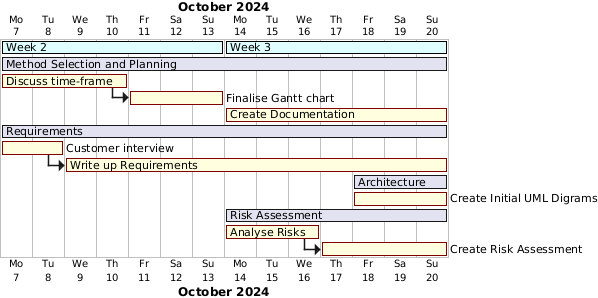
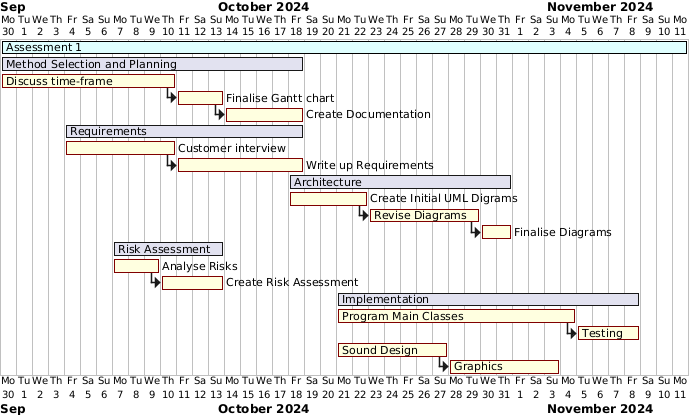
Week 3
During week three, after our insightful meeting with the client, we began creating the game requirements. We aimed to complete the requirements quickly so we could start implementing the game. By the end of the week, we also finalized the overview of our project timeline Gantt chart.
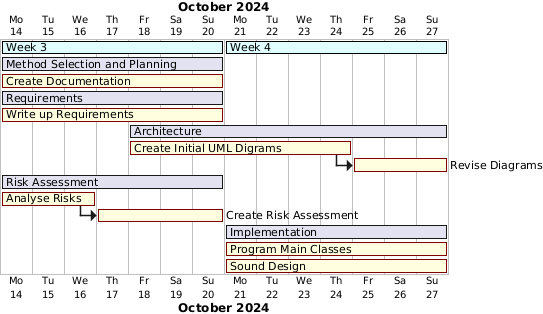
Week 4
In week four, we realized that more time was needed to finalize the requirements, so we continued refining them throughout the week. Additionally, we worked on the risk assessment and began designing the game’s architecture.
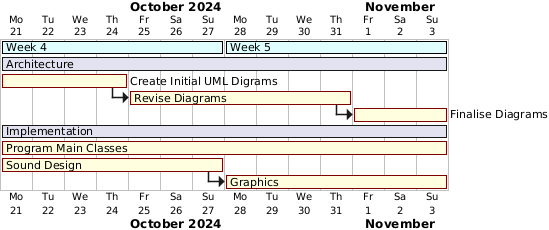
Week 5
In the fifth week, we started implementing the game. Although we began later than planned, it was essential to solidify our design ideas and initial architecture first. During this week, part of the team worked on the architecture document, while others focused on game development. We also began designing the next steps for implementation. As we progressed with coding, we started creating assets for the game, including background tiles, building textures, music, and sound effects.
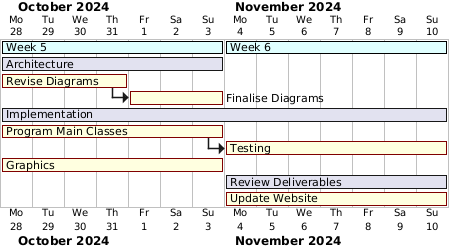
Consolidation Week
During consolidation week, we applied the finishing touches to our architecture document, leaving only coding and asset design to complete. Most of the game was implemented during this time. Throughout the coding process, we consistently referenced the architecture document and updated the design document to meet our requirements. We iterated on the structural class diagram before settling on a final configuration.
Week 6
By week six, the majority of the game was coded. The final task was to thoroughly test the game for bugs. We encountered a window resizing issue where the mouse sometimes misaligned with the building texture on the screen, but after a day of brainstorming, we successfully resolved it.